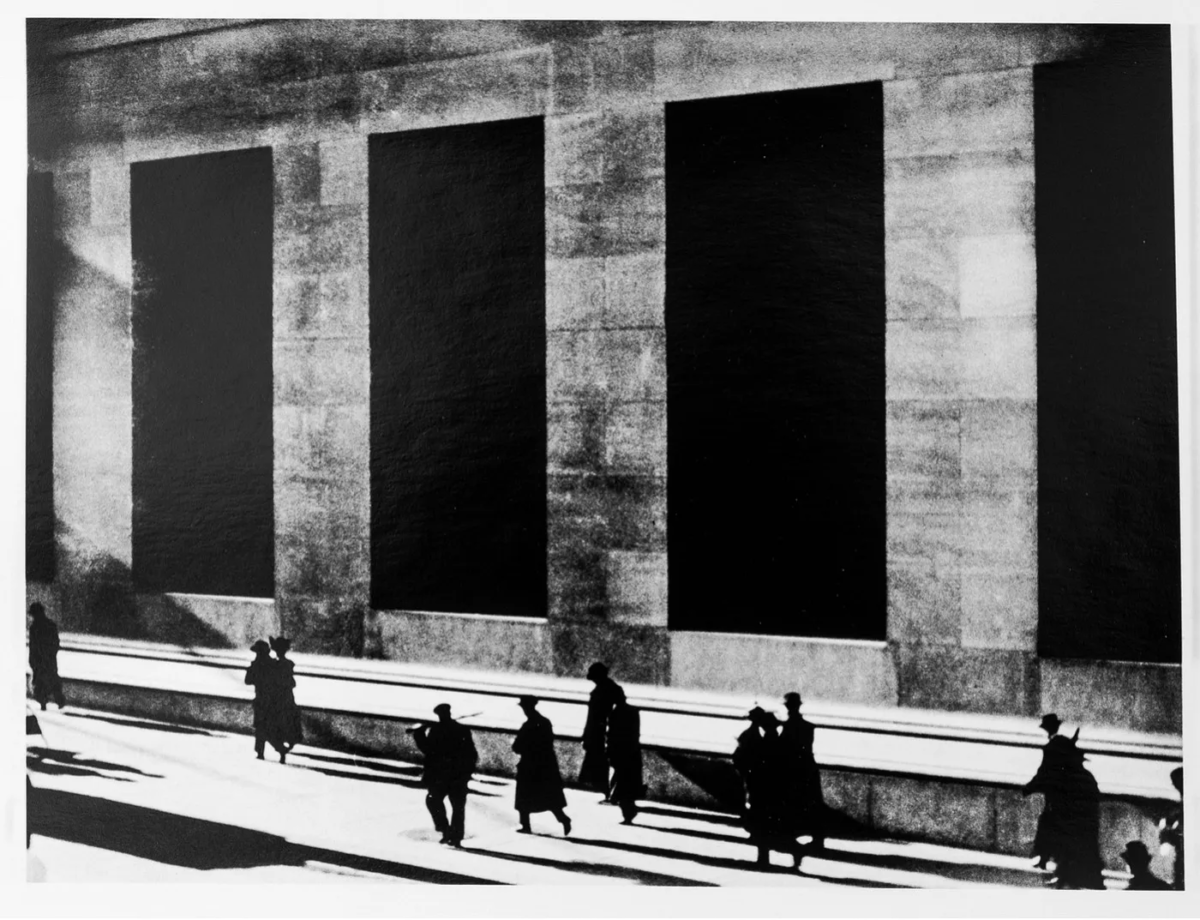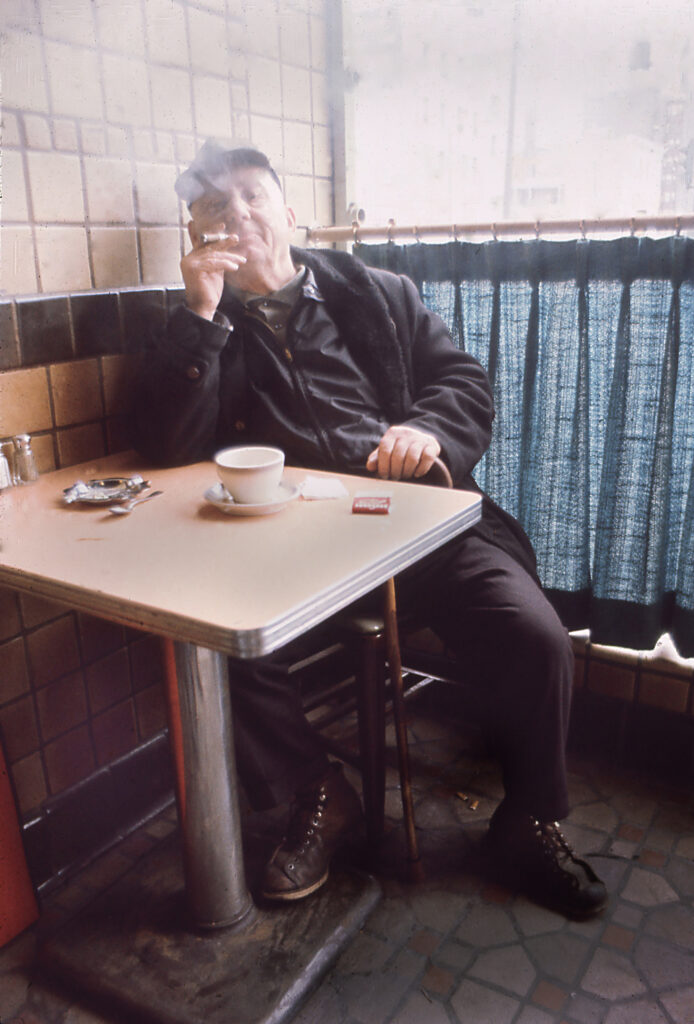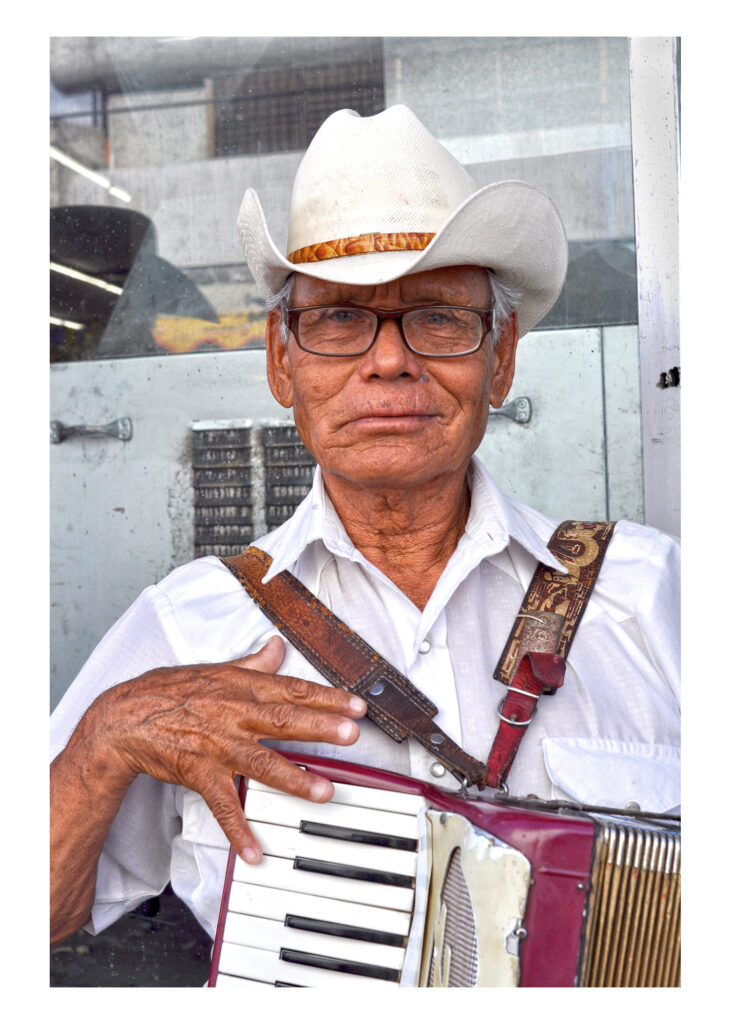LOVE AND DARKNESS: THE BIRTH OF PHOTODOCUMENTARY

Wall Street, 1915 by Paul Strand
Documentary photography has its foundation on journalism, which is defined as “the work of collecting, writing, and publishing news stories in different media,” by the Cambridge Dictionary, due to the use of visuals and ethics (truthfulness and objectiveness, for example) when recording the world and real people as they are, without our intervention. Hence, for me, documentary photography is the action of registering life through our cameras while remaining as a fly on the wall (observing without participating). This may go from taking normal pictures of our community to display contemporary life, to record
important historical and social events that could change the world.
According to the article “Explore the purpose & history of Documentary Photography” on the Adobe website, Documentary photography started right away with the invention of the first cameras during the early 19th century, specifically speaking after the creation of the daguerreotype by Louis Daguerre and the calotype by William Henry Fox Talbot, which allowed photographers to explore storytelling, social commentary, and documentation of human history. Therefore, the earliest documentary photographies were taken in wars as the American Civil War and the Crimean War, that allowed the public to see what
they couldn’t before.
As the Art story website says, “the intention of the documentary photography is to bring to light some otherwise hidden reality or injustice.” As I mentioned in the first question, documentary photography is always associated with journalism due to the motivation of telling the truth without embellishments or biases, since the negative and positive realities must be shown to the audience just as they are to generate awareness over particular themes. And personally, because I have more of an abstract and artistic eye, the intentions behind every documentary photography project relies on the photographer and his/her vision of the world and how they desire to portray it, as long as they are truthful and
objective; even if it’s as simple as depicting streetlights, buildings, or flowers in the park.
There’s some important photography projects that gave light to many social issues. For example, “Let Us Now Praise Famous Men” (1941) with text by Agee and photographs by Evans. In this one, as it will be mentioned in the next question, Walker Evans documented the living conditions of Alabama sharecropper families. “People of the Twentieth Century” by August Sander, who is considered the greatest German portrait photographer of the early 20th century, this project aimed to produce the representational types of Weimar Germany, influencing photographers including Walker Evans and Irving Penn. “Migrant Mother” (70s) by Dorothea Lange. Along with Walker Evans and other photographers took more than 20,00 photographies to show the devastation that came after the Great Depression, Dust Bowl drought, and World Wars. But this one specifically is one of the most famous projects in
photodocumentary history for showing a migrant pea-picker who looks into the distance.
Speaking of Latin-American photographers, Mexican Graciela Iturbide, who’s considEred to be
one of the most influential Hispanic photographers of the last four decades, made a project
called “Sonoran Desert,” (1979) where she took pictures of the Seri people who live along the
Arizona/Mexico border in the Sonoran desert.
According to the Oklahoma Historical Society website, the Farm Security Administration (FSA)
was created in 1937 as a subagency of the U.S. Department of Agriculture to fight the effects of
the Great Depression. Some of the resources it provided were loans to purchase land, equipment,
and livestock, as well as a health care plan for families and promoted educational and training
programs. Speaking of the historic unit created to promote the program, the Agency hired
important photographers to survey the rural American southern states, including Walker Evans,
who was widely known for his portrayal of daily American life during the second quarter of the
century, outdoor advertising, and automobile culture.
As it is written in the National Archives website, Documerica is a collection of more than 20,00 photographies taken throughout the 70s in the US by different photographers as an effort to visibilize the decayed American landscape that was ravaged by the urbanization pollution. This powerful documentary project has its origins in November 1971, after Environmental Protection Agency (EPA) announced a monumental photodocumentary to record changes in the American environment and advocate for the ecological rehabilitation of the country. Just to mention some important photographers that work on this project, Michael Philip Manheim took dramatic photographs of a noise pollution crisis in East Boston, Jack Corn “captured images of coal miners and their families coping with mining–related injuries and the
dreaded black lung disease in West Virginia and Tennessee,” and Bill Gillette documented a
mining crisis in Colorado that destroyed an entire town, whereas Charles O’ Rear showed “the
healthy and happy face of what was documented as the healthiest place in the United States in
the early 1970s.”
According to the article “A Brief History of Documentary Photography” by Sandrine Hermand-Grisel that can be found on the AllAboutPhoto website, Lewish Hine is one of the most iconic names in the
history of documentary photography, especially in the early 20th century, because he used
photography as a tool for social commentary. As Hermand writes, Hine’s photographs “exposed
the exploitative conditions faced by child laborers in the United States by capturing images of
children in factories, mills, and mines.” Because of this powerful social documentary project,
child labor laws and reforming labor practices started to become a serious issue that would
become really years later.
Basically, and personally, documentary photography can appear everywhere in the world as long there’s
something important to tell. It could be in your own family, community, school, or even in the
individual life of the photographer him/her self. What we can do with is endlessly, we could
either keep as a personal project that works as a personal satisfaction (although almost any
creative person has the aim of showing their works and being recognized by them) or promote
through social media, publish it in books or magazines, or displaying it at cultural exhibitions.
But if we speak from the audience’s perspective, what we can do with it is to become inspired by
the artistic and journalistic vision of the photographer and become aware if it has some kind of
social commentary.
IMPORTANT DOCUMENTARY PHOTOGRAPHERS.

Rue de la Montagne-Sainte-Geneviève, 1924.
1920s: Eugène Atget. He was a French surrealist photographer that was often compared with other artists that include Man Ray, Henri Matisse, Pablo Picasso, and André Derain. His work is
mostly based on the Parisian quotidian life and architecture due to being an urbanist historian. He influenced photographers from Ansel Adams to Walker Evans.

Migrant Mother, Nipomo, California (1936)
1930s: Dorothea Lange. She was one of the most important American photographers during the Depression Era. She traveled around the world as a photojournalist and leading magazines as Fortune and Life. She is widely known for her black and white portraits of people, and what’s considered to
be her most important work is Migrant Mother, which portrays a pea picker during
the Dust Bowl.

Girl at the Gee’s Band (1938)
1940s: Arthur Rothstein.
He was an American photographer who is recognized as one of America’s premier photojournalists. He is well known for his work during the Great Depression as one of the photographers hired to document rural communities across the nation for the Farm Security Administration (FSA) to visibilize the living conditions of the rural poor in the United States.

The Americans (1958)
1950s: Robert Frank. He was a Swiss American photographer and filmmaker who became one of the most influential figures of the 20th Century because of his photography project called The Americans (1958), where he showed the developing and gloomy American society of the era. He was also part of the Beat Circle, a movement that represented American freedom and modernism after the two world wars.

Mujer Angel, Angel Woman, Sonora Desert (1979)
1960s-1990s: Graciela Iturbide. She’s a Mexican photographer who is recognized for being one of the most important Hispanic female photographers of the 20th century, along with Brazilian Sebastiao Salgado. Her style is known for documenting small native American and Mexican communities along the border while focusing on portraying Death, women, and small children (her daughter passed away at just 6 years old).

Special delivery, Afghanistan (2005)
21st Century: Lynsey Addario. She is an American photojournalist who has covered humanitarian crises around the Middle East and Africa for over two decades and raised awareness about the conflicts of people in these areas. She has worked for The New York Times, National Geographic Magazine, and Time Magazine and won the Pulitzer Prize for International Reporting in 2009.
BIBLIOGRAPHY:
https://www.britannica.com/biography/Walker-Evans
https://www.okhistory.org/publications/enc/entry.php?entry=FA015
https://www.archives.gov/publications/prologue/2009/spring/documerica.html
https://www.theartstory.org/movement/documentary-photography/
https://www.adobe.com/creativecloud/photography/discover/documentary-photography.html
https://shotkit.com/documentary-photography/
https://dictionary.cambridge.org/dictionary/english/journalism#google_vignette
https://www.all-about-photo.com/photo-articles/photo-article/1429/a-brief-history-ofdocumentaryphotography#:~:text=The%20origins%20of%20documentary%20photography%20c
an%20be%20found,detailed%20and%20permanent%20than%20any%20previously%20known%
20medium.




